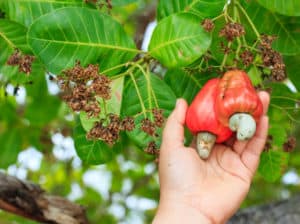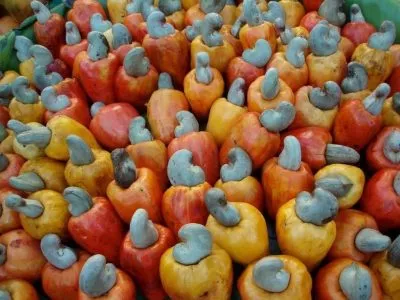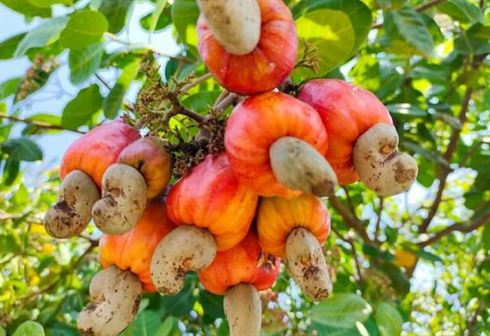Cashew Farming in Nigeria: A Step-by-Step Guide to Profitable Cultivation

Cashew farming in Nigeria is a highly lucrative venture with vast economic benefits. Nigeria is one of the largest producers of cashew nuts in Africa, contributing significantly to global cashew exports. Cashew trees thrive in Nigeria’s tropical and sub-tropical climates, making it an ideal location for cultivation. This comprehensive guide will take you through every step of cashew farming, from land preparation to harvesting and marketing, ensuring you achieve maximum profitability.
1. Understanding Cashew Farming
Cashew farming involves the cultivation of cashew trees primarily for their nuts, which are processed into edible cashew kernels. The trees also produce cashew apples, which can be processed into juice, jam, or wine.
Why Invest in Cashew Farming?
- High demand for cashew nuts globally
- Drought-resistant nature of cashew trees
- Cashew by-products offer additional revenue streams
- Long lifespan with sustained production
2. Choosing the Right Land and Climate
Cashew trees thrive in well-drained sandy or loamy soils with moderate fertility. They require a warm tropical climate with a temperature range of 25-35°C and annual rainfall of 1,000-2,000 mm.
Site Selection Considerations
- Choose an area with good sunshine exposure.
- Avoid waterlogged or clayey soils.
- Conduct a soil test to determine pH (ideal range: 5.0-6.5).
- Select land with gentle slopes for proper drainage.
3. Land Preparation and Planting
Land Clearing
- Remove existing vegetation, stumps, and weeds.
- Conduct plowing and harrowing to improve soil structure.
Spacing and Planting Method

Cashew Farming in Nigeria: A Step-by-Step Guide to Profitable Cultivation
- Recommended spacing: 7m x 7m (for about 204 trees per hectare).
- Plant seeds or seedlings at a depth of 5-10 cm.
- Apply organic manure or compost to improve soil fertility.
Best Planting Season
- The best time to plant cashew seedlings is at the beginning of the rainy season (April – June).
4. Cashew Varieties Suitable for Nigeria
Selecting the right variety is crucial for high yields. Commonly cultivated varieties in Nigeria include:
- Brazilian Cashew – High yield and larger nut size.
- Indian Cashew – Fast-growing and drought-resistant.
- Vietnamese Cashew – Early maturing and high kernel recovery rate.
- Local Nigerian Varieties – Adapted to the climate but with smaller nuts.
5. Nursery Management
If starting from seeds, a nursery setup is essential.
Steps to Establish a Nursery
- Select high-quality cashew seeds.
- Soak seeds in warm water for 24 hours to improve germination.
- Fill nursery bags with a soil-compost mixture.
- Sow seeds 2-3 cm deep in nursery bags.
- Water moderately and provide shade.
- Transplant seedlings to the field after 4-6 months.
6. Fertilizer Application and Soil Management
Cashew trees require adequate nutrients for optimum growth.
Fertilizer Schedule
- First Year: Apply NPK 15-15-15 (200g per tree) after planting.
- Second Year: Increase fertilizer to 400g per tree.
- Mature Trees: Apply 500-700g of NPK annually before flowering.
Organic Fertilizer Options
- Cow dung, poultry manure, or compost can enhance soil fertility naturally.
7. Irrigation and Water Management
Cashew trees are drought-tolerant but benefit from supplemental watering during dry spells.
READ MORE: How Weather Affects Crop Production: Essential Tips for Farmers
Watering Tips
- Water young trees 2-3 times per week.
- Drip irrigation is recommended for efficient water use.
- Reduce watering after the first three years.
8. Pest and Disease Control
Common Pests
- Cashew Stem Borer – Damages tree stems; controlled by applying insecticides.
- Tea Mosquito Bug – Causes leaf curling; controlled using neem oil or pesticides.
Common Diseases
- Powdery Mildew – Affects flowers and leaves; controlled using sulfur-based fungicides.
- Anthracnose – Causes leaf spots; managed by applying copper fungicides.
9. Pruning and Weeding
Pruning Techniques
- Remove dead or diseased branches annually.
- Shape the tree to allow better airflow and sunlight penetration.
- Maintain a single-stem system for higher nut production.
Weed Control
- Use mulching to suppress weeds.
- Hand-pull weeds around young trees.
- Apply herbicides selectively.
10. Harvesting and Post-Harvest Handling
Harvesting Process
- Cashew nuts mature 3-4 months after flowering.
- Collect nuts that fall naturally to the ground.
- Separate nuts from the cashew apple immediately.
Drying and Storage
- Sun-dry nuts for 3-4 days to reduce moisture content.
- Store in jute bags in a well-ventilated area.
- Avoid plastic bags to prevent mold growth.
11. Cashew Processing and Value Addition
Adding value to cashew nuts increases profitability.

Cashew Farming in Nigeria: A Step-by-Step Guide to Profitable Cultivation
Processing Steps
- Roasting – Removes outer shell.
- Peeling – Removes inner skin.
- Grading – Classifies nuts based on size and quality.
- Packaging – Ensures freshness and market readiness.
Other Cashew Products
- Cashew apple juice, jam, and wine
- Cashew nut oil for cosmetics
12. Marketing and Export Opportunities
Local Market Opportunities
- Selling to local processors and traders.
- Supplying cashew nuts to food companies.
- Retailing in major Nigerian markets.
Exporting Cashew Nuts
- Nigeria exports cashew nuts to India, Vietnam, and the USA.
- Ensure compliance with export regulations.
- Register with Nigeria Export Promotion Council (NEPC).
Conclusion
Cashew farming in Nigeria is a rewarding agribusiness with vast market potential. By following this step-by-step guide, farmers can establish a profitable cashew farm, optimize production, and tap into both local and international markets. With proper management, cashew farming offers sustainable income and long-term benefits. Start today and be part of Nigeria’s growing cashew industry!

Leave your comment